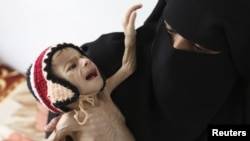Global poverty to fall from 29% in 1999 to less than 10%...
Extreme poverty to fall below 10 percent
Tue, Oct 06, 2015 - Extreme poverty will this year fall to less than 10 percent of the global population for the first time, although there is still “great concern” for millions in Africa, a World Bank report said on Sunday.
Extreme poverty to fall below 10 percent
Tue, Oct 06, 2015 - Extreme poverty will this year fall to less than 10 percent of the global population for the first time, although there is still “great concern” for millions in Africa, a World Bank report said on Sunday.
“This is the best story in the world today — these projections show us that we are the first generation in human history that can end extreme poverty,” said Jim Yong Kim, president of the World Bank, which holds its annual meetings from Friday to Sunday in Lima, Peru, along with the IMF. According to World Bank projections, about 702 million people, or 9.6 percent of the world population, will live below the poverty line this year, mostly in Sub-Saharan Africa and Asia. In 2012, that number stood at 902 million, or about 13 percent of the world population. It stood at 29 percent in 1999.
Kim said the continuing decline in extreme poverty is the result of dynamic economic growth in developing nations and investment in health and education, as well as social safety nets that prevented millions of people from falling back into poverty. “This new forecast of poverty falling into the single digits should give us new momentum and help us focus even more clearly on the most effective strategies to end extreme poverty,” he said. Previously, people living on US$1.25 or less a day were defined as living in extreme poverty. That figure is now US$1.90, to reflect inflation.
The report comes after world leaders last month pledged to end extreme poverty within 15 years, adopting an ambitious set of UN goals to be backed up by trillions of dollars in development spending. Releasing the figures, the World Bank nevertheless urged caution, saying “major hurdles remain” in the goal to end poverty by 2030. “The growing concentration of global poverty in Sub-Saharan Africa is of great concern,” it said in a statement. “While some African countries have seen significant successes in reducing poverty, the region as a whole lags the rest of the world in the pace of lessening poverty.” The report singled out Madagascar and the Democratic Republic of the Congo as particularly worrisome examples of deprivation in Africa.
MORE




